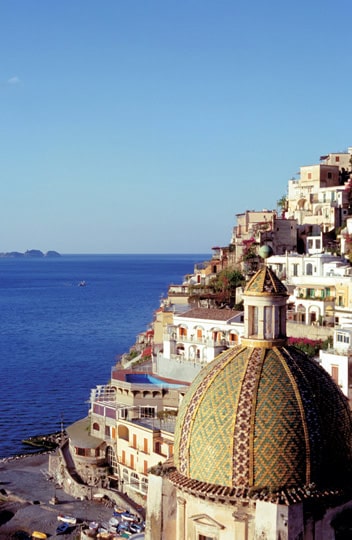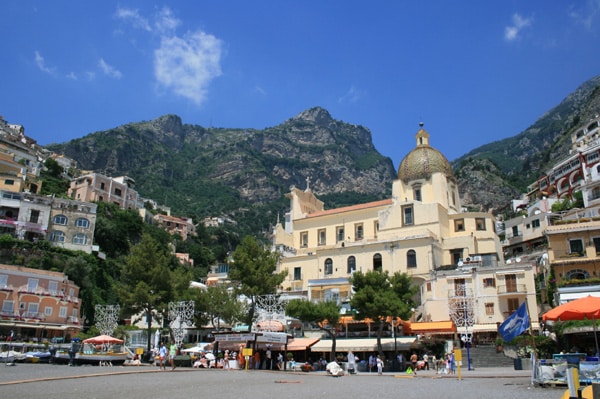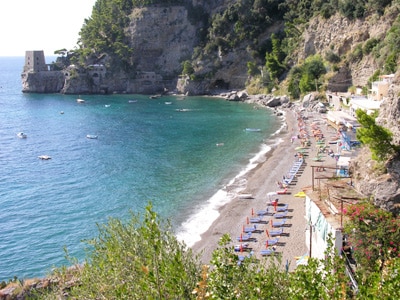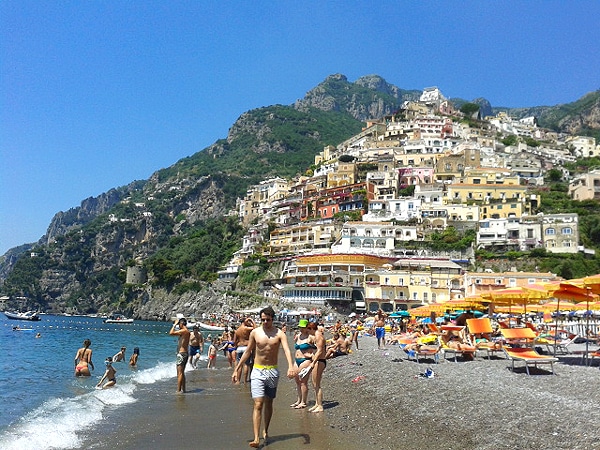Positano
- the only perpendicular village in the world
Positano – according to John Steinbeck “the only perpendicular village in the world”, once a tranquil fishing village and nowadays probably the best known and most fashionable town on the Amalfi Coast.
The image of the pastel-colored houses clinging to the slope and of the turquoise blue sea is not easily forgotten.


Positano
- the celebrity on the Amalfi Coast
“The only perpendicular village in the world” – that’s what Nobel Prize laureate John Steinbeck once called the village of Positano. Visitors to this probably best known and at the same time most fashionable town on the Amalfi Coast are sure to approve: pastel-colored houses nestling one upon the other against the slope and the turquoise blue sea form a magnificent setting. For decades, visitors have been fascinated by this unique sight.
Still a contemplative fishing village at the beginning of the 20th century, Positano was slowly discovered by painters, writers and musicians in the 1920s. Its gradually increasing popularity reached its climax in the 60s when the international jet set moved into the gem on the Amalfi Coast. At times, Positano was considered the most fashionable place in Italy.
Up to the present day, the coastal town is a popular holiday resort for VIPs from the movie-making scene and from politics. The luxurious hotels and expensive restaurants might not be what ‘normal’ tourists are looking for and meanwhile there are alternatives. If you go looking around a bit, you are sure to find the one or other typical restaurant or hotel offering reasonable prices.
Charming village center
It is mainly flocks of day-trippers who are out and about in the center of Positano. So you would be ill-advised to venture into the center by car: apart from the many terraced alleys, only SS163 bypasses the town and Viale Pasitea winds through town in tight turns. You are better off exploring the picturesque center on foot or using the regularly scheduled orange colored city busses “Interno Positano”.
Within the village center, lovely alleys lined with small stores and boutiques wait to be discovered. You should stop by and have a closer look at S. Maria Assunta, the parish church, whose green and yellow majolica cupola is visible from afar.


Positano has two beaches, “Spiaggia Grande” and “Spiaggia Fornillo”. In summer, locals as well as tourists enjoy their days at the gravel beach.
The fact that Positano used to be a sleepy fishing village comes back to mind when you watch the fishing boats offshore as they form a picturesque foreground for the coastal town rising up beyond.
Location
- Train station closest to Naples: Sorrento (ca. 20 km off)
Sie sehen gerade einen Platzhalterinhalt von Standard. Um auf den eigentlichen Inhalt zuzugreifen, klicken Sie auf den Button unten. Bitte beachten Sie, dass dabei Daten an Drittanbieter weitergegeben werden.
Weitere InformationenPositano
- where the "Path of Gods" ends
Sooner or later, hiking enthusiasts on tour at the Amalfi Coast are sure to end up at Positano: It is the trail end of the best known and probably most beautiful hiking trail at the Costiera, of Sentiero degli Dei.
From its trailhead at Agerola it runs past typically Mediterranean macchie, through the mountain villages of Montepertuso and Monte Gambero to its trail end at Positano. Hikers are rewarded with magnificent views of the Costiera Amalfitana and Capri.
Nearest train station: Meta di Sorrento (with Circumvesuviana from Napoli Garibaldi), then on by bus to Positano

